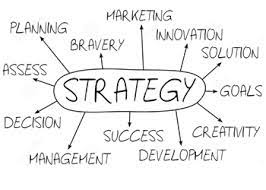Creating a comprehensive social media plan involves several key steps and considerations. Here’s a framework to help you develop a robust social media plan based on learned strategies and concepts:
- Set clear objectives: Start by defining your social media objectives based on your overall marketing and business goals. These objectives should be specific, measurable, attainable, relevant, and time-bound (SMART). For example, your objectives could be to increase brand awareness, drive website traffic, generate leads, or improve customer engagement.
- Identify your target audience: Clearly define your target audience based on demographic, psychographic, and behavioral characteristics. Understand their needs, preferences, and pain points. This knowledge will help you tailor your content, messaging, and tactics to resonate with your audience effectively.
- Choose the right social media platforms: Determine which social media platforms align best with your target audience and business objectives. Consider factors such as platform demographics, user behavior, and the type of content that performs well on each platform. Focus your efforts on the platforms that offer the greatest potential for reaching and engaging your audience.
- Develop a content strategy: Create a content strategy that aligns with your brand identity, audience interests, and social media platform dynamics. Determine the types of content you will create, such as blog articles, videos, infographics, or user-generated content. Plan a content calendar to ensure consistent posting and a balanced mix of content formats.
- Implement content optimization techniques: Apply optimization techniques to maximize the reach and impact of your social media content. This includes using relevant keywords, hashtags, and captions, optimizing visuals for each platform, and conducting A/B testing to refine content performance. Leverage analytics and insights to identify high-performing content and adapt your strategy accordingly.
- Engage with your audience: Social media is a two-way communication channel. Develop a plan to engage with your audience by responding to comments, messages, and mentions promptly. Encourage conversations, seek feedback, and ask questions to foster engagement and build relationships with your audience.
- Leverage influencer marketing: Consider leveraging influencer marketing to expand your reach and credibility on social media. Identify influencers who align with your brand values and have an engaged audience relevant to your target market. Collaborate with them to create content, run campaigns, or promote your products/services. Measure the effectiveness of influencer partnerships and adjust your strategy as needed.
- Utilize paid advertising: Incorporate paid advertising into your social media plan to amplify your reach and achieve specific objectives. Utilize targeting options provided by each platform to reach your desired audience effectively. Experiment with different ad formats, such as sponsored posts, video ads, or carousel ads, and track key metrics to optimize campaign performance.
- Monitor and measure performance: Regularly monitor your social media performance using analytics tools and platform insights. Track key metrics such as engagement rates, reach, impressions, click-through rates, conversions, and audience demographics. Analyze the data to identify trends, patterns, and areas for improvement. Use these insights to refine your strategies and optimize your social media efforts.
- Stay updated and adapt: Social media platforms and trends evolve rapidly. Stay updated with the latest changes, algorithm updates, and emerging social media platforms. Continuously learn from industry best practices, case studies, and thought leaders. Adapt your social media plan accordingly to stay relevant and capitalize on new opportunities.
Remember, a comprehensive social media plan is a dynamic document that requires regular evaluation and adjustment. Continuously learn from your experiences, embrace experimentation, and refine your strategies based on data-driven insights. By implementing a well-rounded social media plan, you can effectively engage your audience, achieve your marketing objectives, and drive business growth.
SHARE
